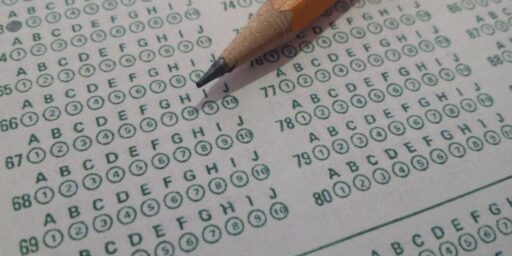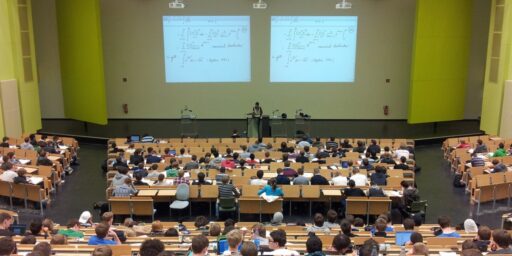ATLANTIC’S COLLEGE SURVEY
As usual, The Atlantic Monthly has a host of great stuff in the current issue. The cover story and several smaller pieces deal with college admissions and related issues. They feature their First Annual College Admissions Survey, which they introduce by contrasting the angst that goes into the process with the reality that virtually any American kid can get a pretty good college education:
What the admissions system is really designed for is the subtle, subjective work of matching millions of students with thousands of schools. Romantic images are often used to describe this process–finding a date, choosing a spouse–and the comparisons do apply. In higher education, as in dating or marriage, individual tastes and needs differ. There are widely agreed-upon ideas of more and less attractive partners, but there is no single “best” or “right” choice. If one matchup doesn’t work, many others are available.
There are plenty of fish in the sea. American colleges are unbelievably varied. There are thousands of institutions of post-high school instruction in the United States: more than 2,300 four-year colleges, more than 1,800 two-year colleges, and an unknown but large number of trade schools, technical institutes, art or music centers, and other specialized schools. There are night schools for people with jobs; online or written correspondence courses for people in remote locations; universities in big cities and on secluded campuses in Oregon and Maine. There are technical institutes–for music, nursing, forestry, aviation–and colleges that emphasize the classics. The American higher-education establishment includes the Air Force Academy and Juilliard, Bob Jones University and Caltech.
***
Writing about the stresses and uncertainties in the admissions process carries a risk. The counselors and admissions officers we interviewed said time and again that their collective message to America’s parents is “Calm down!” A realistic portrayal of the admissions system might not have that effect initially. But the more clearly students and their parents understand how many choices they have, and how hard the real system will try to find the right match for them, the more confident they should be.
Indeed. And, while some schools are clearly better than others, there is no ONE RIGHT SCHOOL for everyone. (Although I wouldn’t recommend Bob Jones. -ed.)
For the inauguration of this special feature Atlantic reporters interviewed many dozens of admissions directors and high school counselors, asking which trends they thought would most affect students in the coming year. One result of that reporting is “The New College Chaos” by James Fallows, which describes what students should know about the new level of unpredictability and commercialism in the admissions system, and how counselors believe students can cope with it.
This issue also addresses a basic question in admissions: how parents and students should think about “desirable” schools, and whether current systems of ranking and rating schools identify the right traits. In “What Makes a College Good?,” Nicholas Confessore discusses a new assessment system designed (imagine!) to measure how well students learn to read, write, and think once they are in college. To demonstrate the strengths and limitations of rating systems The Atlantic conceived a rating system of its own (see “The Selectivity Illusion,” by Don Peck).
In “The Bias Question,” Jay Mathews reports on charges of ethnic bias in the SAT by a former ETS employee.
Finally, in “The Late-Decision Program,” V. V. Ganeshananthan reveals a little-known but important safety net in the admissions process whereby thousands of students get a second chance at finding the right school.





